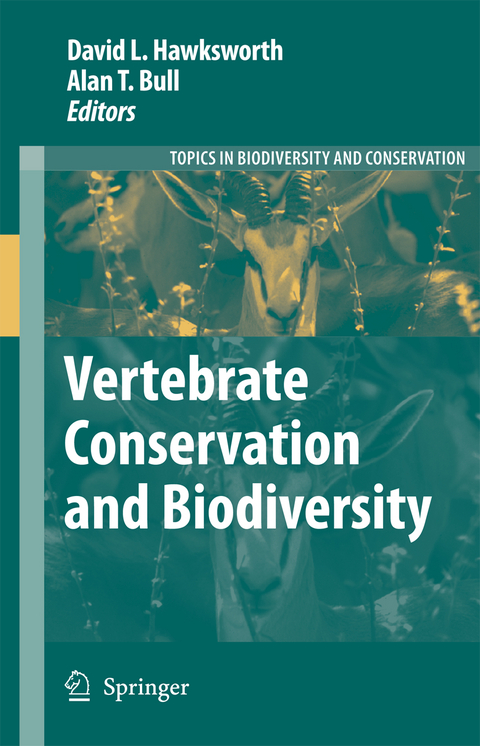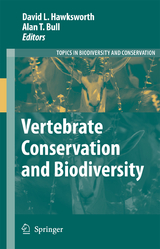Vertebrate Conservation and Biodiversity
Springer-Verlag New York Inc.
978-1-4020-6319-0 (ISBN)
Responses of plant and bird communities to prescribed burning in tallgrass prairies.- Population trends and spatial synchrony in peripheral populations of the endangered Lesser grey shrike in response to environmental change.- Monitoring mammals in the Caxiuanã National Forest, Brazil – First results from the Tropical Ecology, Assessment and Monitoring (TEAM) program.- Grassland versus non-grassland bird abundance and diversity in managed grasslands: local, landscape and regional scale effects.- Biogeographic patterns of the East African coastal forest vertebrate fauna.- Sooty Shearwater (Puffinus griseus) on Guafo Island: the largest seabird colony in the world?.- Mexico in the international reptile skin trade: a case study.- Use of forest fragments by blue-winged macaws (Primolius maracana) within a fragmented landscape.- Commercialization and use of snakes in North and Northeastern Brazil: implications for conservation and management.- Philopatry, dispersal patterns and nest-site reuse in Lesser Grey Shrikes (Lanius minor).- Conservation biogeography of anurans in Brazilian Cerrado.- Avian responses to tourism in the biogeographically isolated high Córdoba Mountains, Argentina.- Population decline of loggerhead turtles: two potential scenarios for Fethiye beach, Turkey.- Habitat use, roost selection and conservation of bats in Tsingy de Bemaraha National Park, Madagascar.- Territoriality and Survivorship of the Sierra Madre Sparrow in La Cima, México.- Analysis of the species description process for a little known invertebrate group: the limnoterrestrial tardigrades (Bilateria, Tardigrada).- Environmental correlates for species richness among amphibians and reptiles in a climate transition area.- Amphibian diversity in East African biodiversity hotspots:altitudinal and latitudinal patterns.- China Subregional Avian Endemism and Biodiversity Conservation.- How resilient are Andean montane forest bird communities to habitat degradation?.- Human and natural impacts on forests along lower Tana river, Kenya: implications towards conservation and management of endemic primate species and their habitat.- Fragmentation causes rarity in common marmosets in the Atlantic forest of northeastern Brazil.- Distribution, abundance, and habitat use of introduced Boa constrictor threatening the native biota of Cozumel Island, Mexico.- Camera-trap studies of maned wolf density in the Cerrado and the Pantanal of Brazil.- Mammal survey at a ranch of the Brazilian Cerrado.- Surveying carnivores at large spatial scales: a comparison of four broad-applied methods.- Habitat and landscape factors associated with neotropical waterbird occurrence and richness in wetland fragments.- Livestock husbandry as a tool for carnivore conservation in Africa’s community rangelands: a case–control study.- Comparison of funding and demand for the conservation of the charismatic koala with those for the critically endangered wombat Lasiorhinus krefftii.- Nest site selection in middle and great spotted woodpeckers Dendrocopos medius & D. major: implications for forest management and conservation.- An Evaluation of the Contribution of Cultivated Allspice (Pimenta Dioca) to Vertebrate Biodiversity Conservation in Nicaragua.
| Reihe/Serie | Topics in Biodiversity and Conservation ; 5 |
|---|---|
| Zusatzinfo | X, 494 p. |
| Verlagsort | New York, NY |
| Sprache | englisch |
| Maße | 155 x 235 mm |
| Themenwelt | Naturwissenschaften ► Biologie ► Ökologie / Naturschutz |
| Naturwissenschaften ► Biologie ► Zoologie | |
| ISBN-10 | 1-4020-6319-9 / 1402063199 |
| ISBN-13 | 978-1-4020-6319-0 / 9781402063190 |
| Zustand | Neuware |
| Haben Sie eine Frage zum Produkt? |
aus dem Bereich




